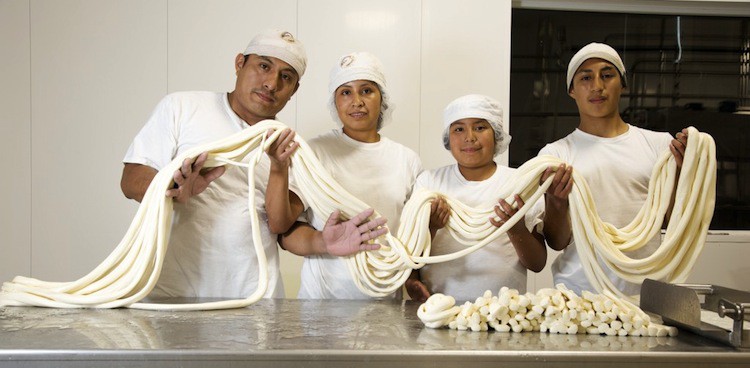
In this blog series, Molly will be (virtually) traveling around the globe to explore the way cheeses are enjoyed and incorporated into different cuisines. Some of these cheeses and methods might seem familiar, while others might be completely new to you. Last week, we talked about Japan, where artisanal cheesemakers are starting to make a name for themselves with recipes inspired by Japanese cuisine. This week we learn about Mexico and one lucky reader will win a free copy of culture! Get more stamps on your cheese passport and join us for a historical and cultural adventure!
Despite being an important piece of the gastronomic culture of Mexico, it has taken the United States a long time to notice the cheese produced there. Traditional Mexican cheese goes far beyond the pre-shredded packaged blends we put on our tacos, and it provides some insights into the history of our neighbors to the south.
Dairy wasn’t a part of the Mesoamerican culture before the Spanish conquistadors arrived with cows, sheep, and goats. This introduction of dairying and ranching had quite an impact on Mexican cuisine, and now the country is one of the largest consumers of cheese in the world. When cheesemaking began in the country in the mid-1800s, there was no culture of affinage or refrigeration. People would make a queso fresco (fresh cheese) of pressed curds that were lightly salted, somewhat similar to paneer. This cheese is meant for eating the day or week it is made.
The variety of cheeses there doesn’t even begin to match that of France, but approximately half of the cheese produced is still made at home or in quesarias (creameries) or ranchos (farmstead operations). Mexicans usually use cheese as a garnish for dishes or in cooking (rather than as a course or snack as we’ve seen in places like France). Cow’s milk is used almost exclusively to make traditional Mexican cheeses, though small quantities of sheep and goat’s milk cheeses can be found in some areas of the country.
Besides queso fresco, another popular cheese in Mexico is queso Oaxaca, named for its state of origin, but also known as quesillo (small cheese) or queso de hebra (string cheese.) It is a pulled-curd cheese, that is usually sweet and acidic, often used to make quesadillas, since it melts very well. Cotija is a semi-firm cheese, traditionally made from raw cow’s milk and aged, producing a dense and crumbly texture with a lactic tang and saltiness. For more information about traditional Spanish cheeses, check out this list from Diana Kennedy, who is often referred to as the “Julia Child of Mexico.”
Mexico has developed an artisan cheese movement over the past few decades, but like many of the countries we have visited in this series, most of these cheeses are only available in local markets. The country exports some industrial cheeses to the United States, but for the most authentic flavors, look for cheeses produced in Hispanic-owned factories. Cesar’s Cheese in Wisconsin and Ochoa’s Quesaria in Oregon are some of our favorites here at culture.
What’s your favorite way to eat Mexican cheese? Do you have any recipes you want to share? Comments must be posted by 11:59 p.m. EDT on Tuesday, September 2, 2014, to be eligible to win. So comment today and stay tuned for next week’s post, when we travel to back home to the United States!
Photo Credit: Featured image of Cesar Luis and family courtesy of Edible Milwaukee





